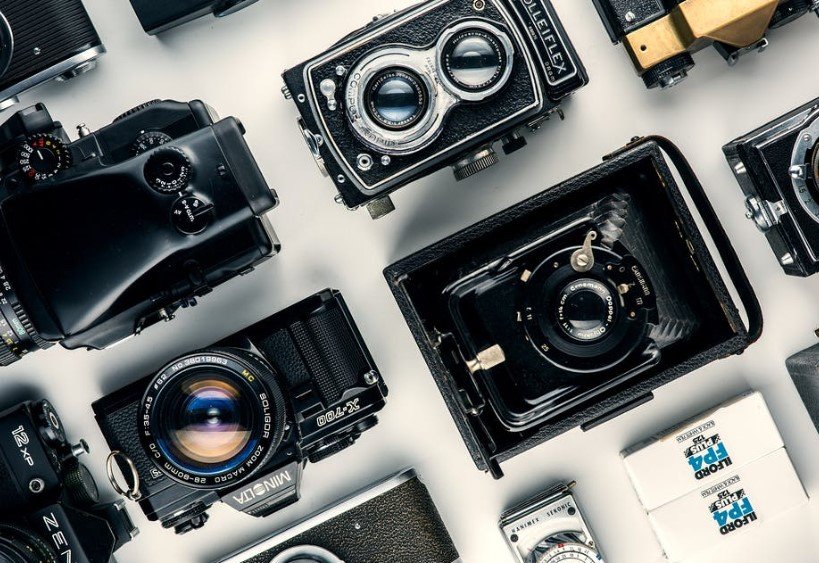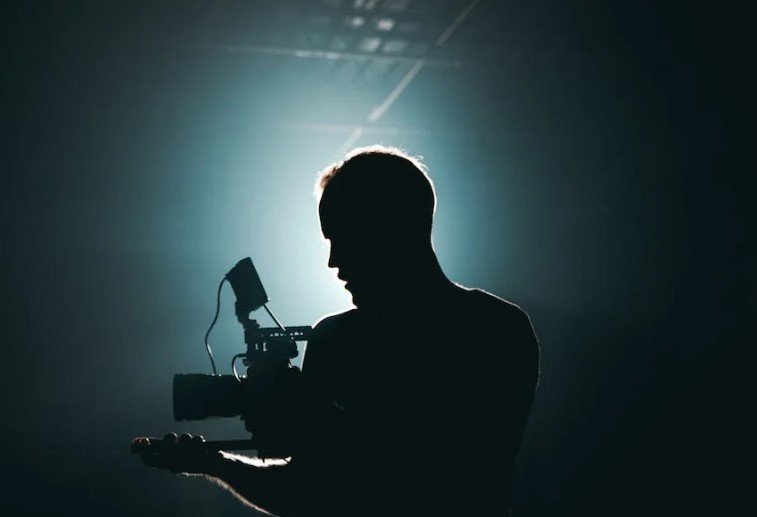Video surveillance cameras have become an essential tool for ensuring the safety and security of homes and businesses alike. Advances in technology have made it easier and more affordable than ever to set up a high-quality video surveillance system. Whether you are looking to protect your property from theft, vandalism, or other criminal activities, or simply want to keep an eye on things when you are away, a reliable video surveillance system can provide you with peace of mind.

However, with so many different options available, choosing the right video surveillance cameras can be overwhelming. That’s why this article will provide you with tips and guidelines on how to select the best cameras for your specific needs, whether you are installing a system for your home, retail store, or other business. By following these tips, you can ensure that you get the right equipment to maximize your security and surveillance capabilities.
Types of Cameras

1. Dome Cameras
Dome cameras are characterized by their dome-like shape and are ideal for indoor installations. They provide 360-degree coverage and can be remotely rotated or tilted. Dome cameras are discreet and tamper-proof, making them suitable for public places. They are available in both fixed and adjustable lenses. The main disadvantage of dome cameras is that they are not effective when it comes to low-light conditions.
2. Bullet Cameras
Bullet cameras are cylindrical in shape and come in a variety of sizes. They are suitable for outdoor installations because of their weather-resistant design. Bullet cameras are ideal for long-distance surveillance and provide high-resolution images with a small lens aperture. The major disadvantage of bullet cameras is that they can be easily vandalized.
3. PTZ (Pan-Tilt-Zoom) Cameras
PTZ cameras can be remotely controlled to pan, tilt or zoom, providing a 360-degree coverage. They can be programmed to track moving objects and zoom in for closer surveillance. PTZ cameras are ideal for outdoor installations and can be used for both residential and commercial settings. The major disadvantage of PTZ cameras is that they are expensive and require professional installation.
4. Covert Cameras
Covert cameras are designed to be hidden and are ideal for discrete surveillance. They can be disguised as everyday objects such as smoke detectors, clocks, or pens. Covert cameras provide higher resolution images and can be remotely accessed over the internet. The major disadvantage of covert cameras is that they can be illegal in some jurisdictions and their use should be carefully considered.
Choosing the Right Camera
When choosing the right camera, consider your specific needs such as the area to be covered, the type of surveillance required, and your budget. For outdoor installations, bullet or PTZ cameras are suitable, while for indoor installations, dome cameras or covert cameras may be more appropriate. If low light conditions are a concern, consider cameras with an infrared capability. It is recommended to consult with a professional installer to ensure that the cameras are set up correctly and effectively.
Image Quality
Image quality plays a crucial role when choosing a video surveillance camera for your home or business. It determines the clarity of the footage captured by the camera, making sure that the images captured are clear and easily identifiable. A high-quality video camera not only assists in identifying and capturing intruders but also aids in gathering essential evidence in case any criminal activity takes place.
Factors That Affect Image Quality
Several factors contribute to image quality, including resolution, frame rate, low-light performance, compression algorithms, and lens quality. Resolution refers to the number of pixels in the image, which determines the clarity of the footage captured. Frame rate, on the other hand, determines how smooth the video appears. The higher the frame rate, the smoother the video will be. Low-light performance affects the camera’s ability to capture quality footage in low lighting conditions, while compression algorithms can impact the quality of the footage recorded. Lastly, lens quality can impact the sharpness and clarity of the captured footage.
What to Look For?
When considering image quality in a video surveillance system, it is essential to look for a camera with at least 1080p resolution, a high frame rate, low-light performance, a good compression algorithm, and lens quality that will deliver sharp and clear images. Higher-end cameras with 4K or even 8K resolution provide even clearer images, but these cameras can be more costly. Regardless of the resolution, always make sure to test the camera’s low-light performance to see how it captures footage in dimly lit environments.
Night Vision

Importance of Night Vision
Night vision is essential for video surveillance cameras as the ability to capture clear images in low light is crucial for ensuring the safety and security of a property. Without night vision capabilities, surveillance footage captured during nighttime or in indoor areas with low light may be unclear, grainy or even non-existent, rendering it useless for investigating crimes or incidents. An effective night vision feature can provide around-the-clock surveillance and ensure peace of mind.
Various Options for Night Vision
Infrared and low-light sensitivity are the two main options for night vision in video surveillance cameras. Infrared night vision uses infrared light to illuminate an area, allowing the camera to capture clear images in complete darkness. Low-light sensitivity, on the other hand, amplifies the available light in a low light environment to produce an image. Both options have their benefits and limitations, and the best option may depend on the specific needs of a property and the desired level of detail in captured footage.
Night Vision Capabilities
When selecting a video surveillance camera with night vision capabilities, consider the camera’s resolution and sensitivity in low light conditions, as these factors will have a direct impact on the quality of the footage captured. A camera with a high resolution and low-light sensitivity will produce better images in low-light environments. It is also important to consider the range of the night vision feature, as this varies between cameras, and the type of infrared lighting, as some cameras come with adjustable infrared lighting that can be customized to suit the needs of the property.
Connectivity
The importance of connectivity
Connectivity is crucial when choosing a video surveillance camera because it allows for remote access and monitoring. Video surveillance cameras with strong connectivity options enable users to monitor their property from their smartphones or computers, making it easier to stay in touch with what’s happening in real-time, even when they are away from the location. Connectivity also ensures that videos and images are seamlessly transmitted to the cloud without any hassle.
Connectivity options
Wi-Fi
Wi-Fi connections are wireless and establish a connection between the camera and the internet using your Wi-Fi network. This connection is a perfect solution when you cannot run an Ethernet cable to your camera’s location. Wi-Fi connectivity is a popular choice because it allows you mobility, flexibility and no-invasive camera installation.
Ethernet
Ethernet connectivity involves the use of a hard-wired network cable to establish a connection between the camera and the internet. Ethernet connections are faster and more stable than Wi-Fi connections. However, it is essential to note that they may require more technical expertise and complicated camera installation.
Help readers decide which connectivity
The best connectivity option for you depends on factors such as the location of the camera, the type of installation, stability, and reliability required. If you have a stable internet connection and want to maximize the camera’s capabilities, an Ethernet connection is an ideal choice. However, if you value mobility and flexibility or cannot achieve a wired connection, Wi-Fi is your best bet. Consider your needs and available resources before you make a choice.
Budget
Importance of Budget
Setting a budget is essential when it comes to choosing video surveillance cameras for your property. It helps you narrow down your options and decide which features are the most important for your specific needs. Without setting a budget, you may end up overspending or sacrificing essential features.
Budget Options
Low Budget ($20-$50)
For those on a tight budget, basic indoor surveillance cameras are available. However, they may have limited features such as no night vision or low-resolution video.
Mid-Range Budget ($100-$250)
With a slightly higher budget, you can invest in better quality cameras that offer more features like motion detection, audio recording, and mobile app integration. These cameras provide greater video storage capacity and better video resolution.
High-End Budget ($250-$500)
For the most demanding applications, high-end cameras offer advanced features such as advanced motion detection, facial recognition, and advanced night vision. They also provide exceptional video quality for both indoor and outdoor use.
Features at Different Price Points
At the low end of the price range, cameras typically have basic features such as 720p video resolution, basic motion detection, and limited storage capacity. Mid-range cameras offer better resolution, better motion detection, and more storage capacity. Higher-end cameras offer advanced motion detection, facial recognition, object tracking, and much higher video resolution. Ultimately, setting a budget is important, but choosing the right camera for your specific needs is essential for the safety of your home, business, or loved ones.
Conclusion
In conclusion, choosing the right video surveillance cameras for your home or business is crucial to ensure effective security. This article highlights the key factors that individuals and organizations should consider when choosing their video surveillance cameras, including camera types, resolution, storage, and connectivity. By carefully assessing these factors, readers can make informed decisions and select cameras that meet their unique needs and budgets. Ultimately, investing in high-quality surveillance cameras can help prevent theft, vandalism, and other security threats, and provide peace of mind for homeowners and business owners alike.
FAQ
1. What resolution should I look for in a video surveillance camera?
Look for a camera with at least 1080p resolution, preferably higher. This will ensure clear and detailed images.
2. Should I choose a wired or wireless camera?
It depends on the specific needs of your home or business. Wired cameras are more reliable and have a constant power source, while wireless cameras are more flexible in terms of placement and can be accessed remotely.
3. Can I use indoor cameras for outdoor surveillance?
No, indoor cameras are not designed for outdoor use and will not withstand harsh weather conditions. It is important to choose a camera specifically designed for outdoor surveillance.
4. Do I need a camera with night vision?
Yes, if you are monitoring an area that is not well-lit or 24/7, it is important to choose a camera with night vision to ensure clear images even in low light conditions.
5. How much storage do I need for my video surveillance system?
The amount of storage needed will depend on the number of cameras and the length of time you want to store footage. As a general rule, aim for at least 1TB of storage for a basic system with 4-6 cameras.
